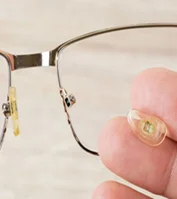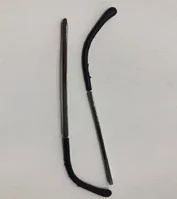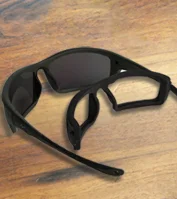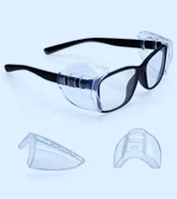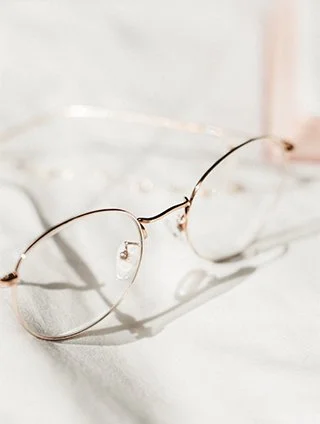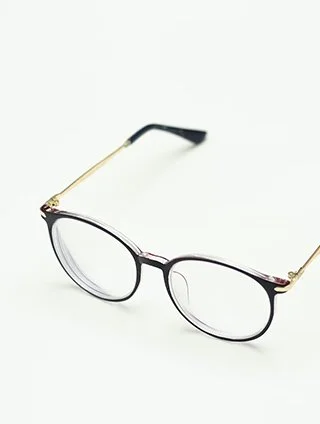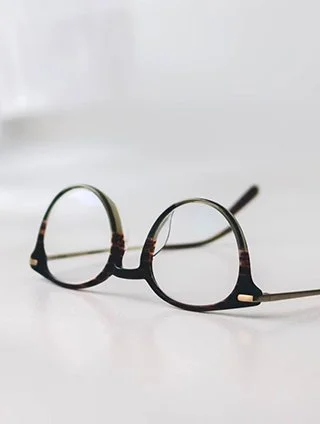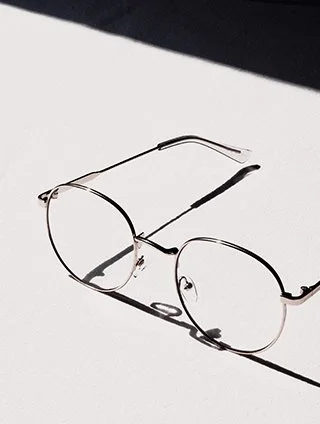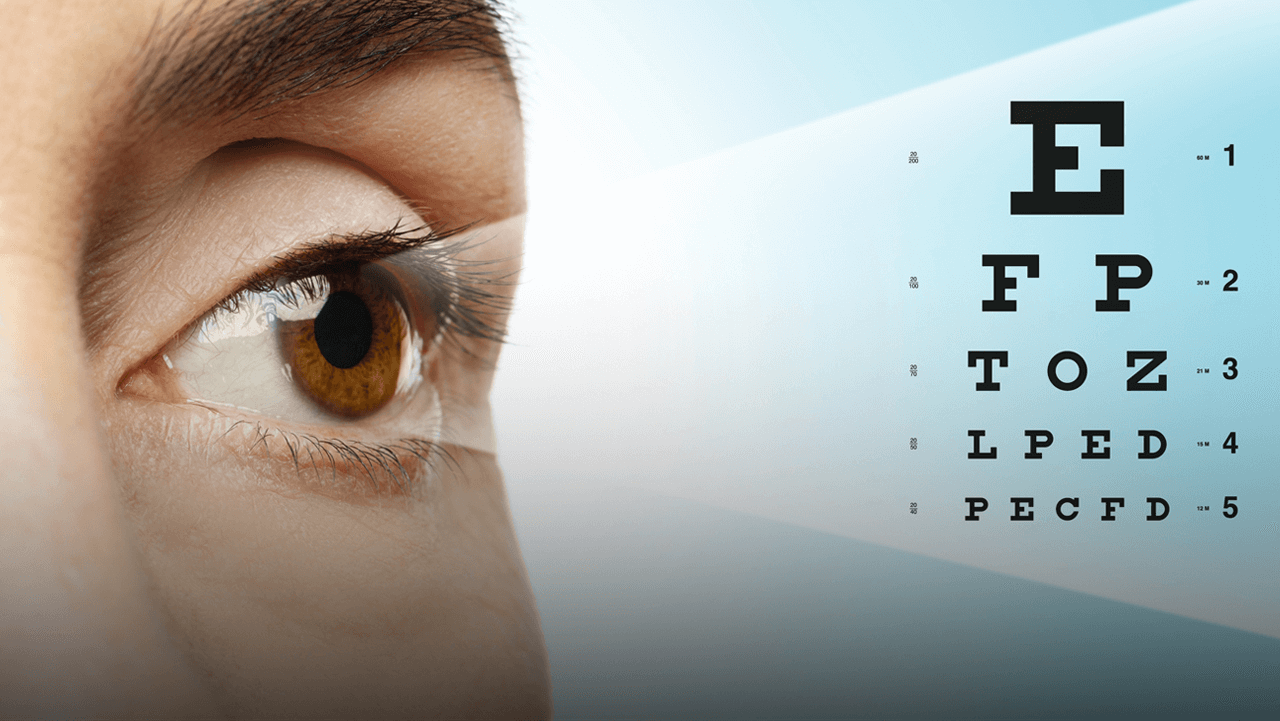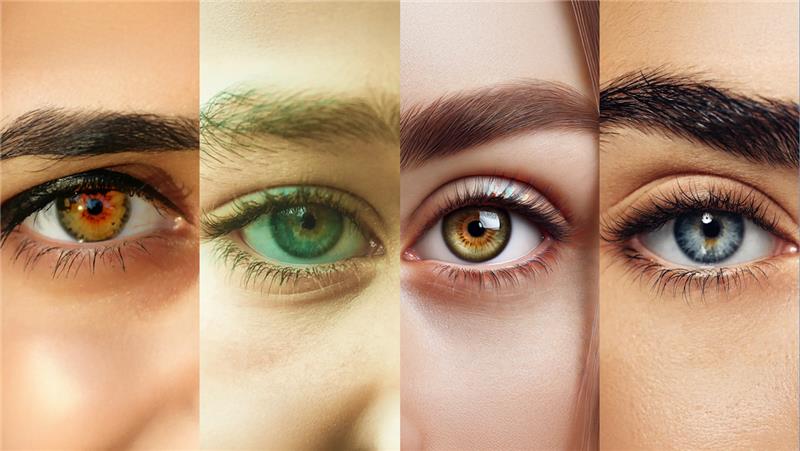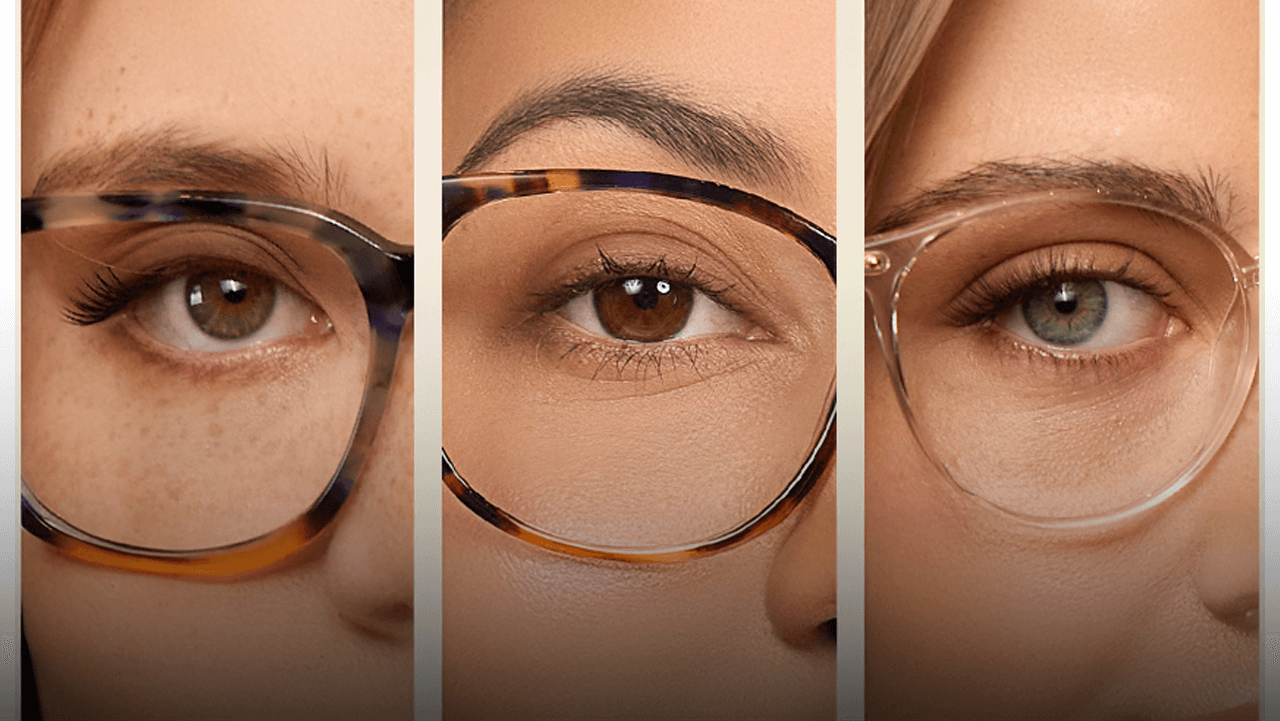Last updated: Monday, November 10, 2025
Visual acuity is an essential aspect of human eyesight that shapes our ability to sense our surroundings. It determines the distances we see things clearly and sharply, whether far or near. It all depends on your visual acuity regarding how much detail you can observe when reading, driving, or watching a movie. Ophthalmologists and optometrists use a variety of procedures and charts if a patient requires glasses or further examinations.
Understanding visual acuity is important not only to diagnose vision problems but also to maintain overall eye health. If you require high-quality glasses with perfectly corrected vision lenses, Eyeweb is the best alternative for you. Let us start by discussing what visual acuity is, how it is measured, the many tests, and vision scales. After doing this, you will be in a better place to understand how the vision can be measured and interpreted.
Normal Visual Acuity
Normal visual acuity or 20/20 vision displays that you can see clearly at 20 feet (or 6 meters). An individual with normal vision can see the same distance. It is a "perfect" vision in terms of sharpness and clarity under controlled testing.
Being 20/20 does not imply that your eyesight is flawless. It just means that your central visual acuity is average. Even with 20/20 vision, you can have issues like astigmatism, color blindness, as well as issues with peripheral vision.
Examples of above average acuity include 20/15, meaning you can see 20 feet and the rest should be at 15 feet. This is essential in everyday living as well as the overall health of the eye. That is why the regularity of vision screening is an essential part of healthcare.
Visual Acuity Types
Many types of visual acuity are tested by professionals depending on the occurrence and the given visual activity.
- Distance Visual Acuity: Distance visual acuity is used to assess the ability of an individual to see distant things, measured using a Snellen chart at 20 feet. It is the most common type that is taken during eye assessment.
- Near Visual Acuity: This checks how sharp the vision is at close range, such as reading a book or a phone. For this test, a Jaeger chart is often used.
- Static Visual Acuity: It tests your capacity to recognize objects when you and the object are both static. It's the universal protocol used in most standard vision exams.
- Dynamic Visual Acuity: It involves the ability of your eyes to see and identify objects and targets when you or the target is in motion. It is very relevant to athletes and individuals in ill activities.
- Peripheral Acuity: The capacity to see objects outside of your direct line of contact that you do not typically test is known as peripheral vision. It's important for driving.
Each of these provides information on a different facet of visual function and is important for complete eye care.
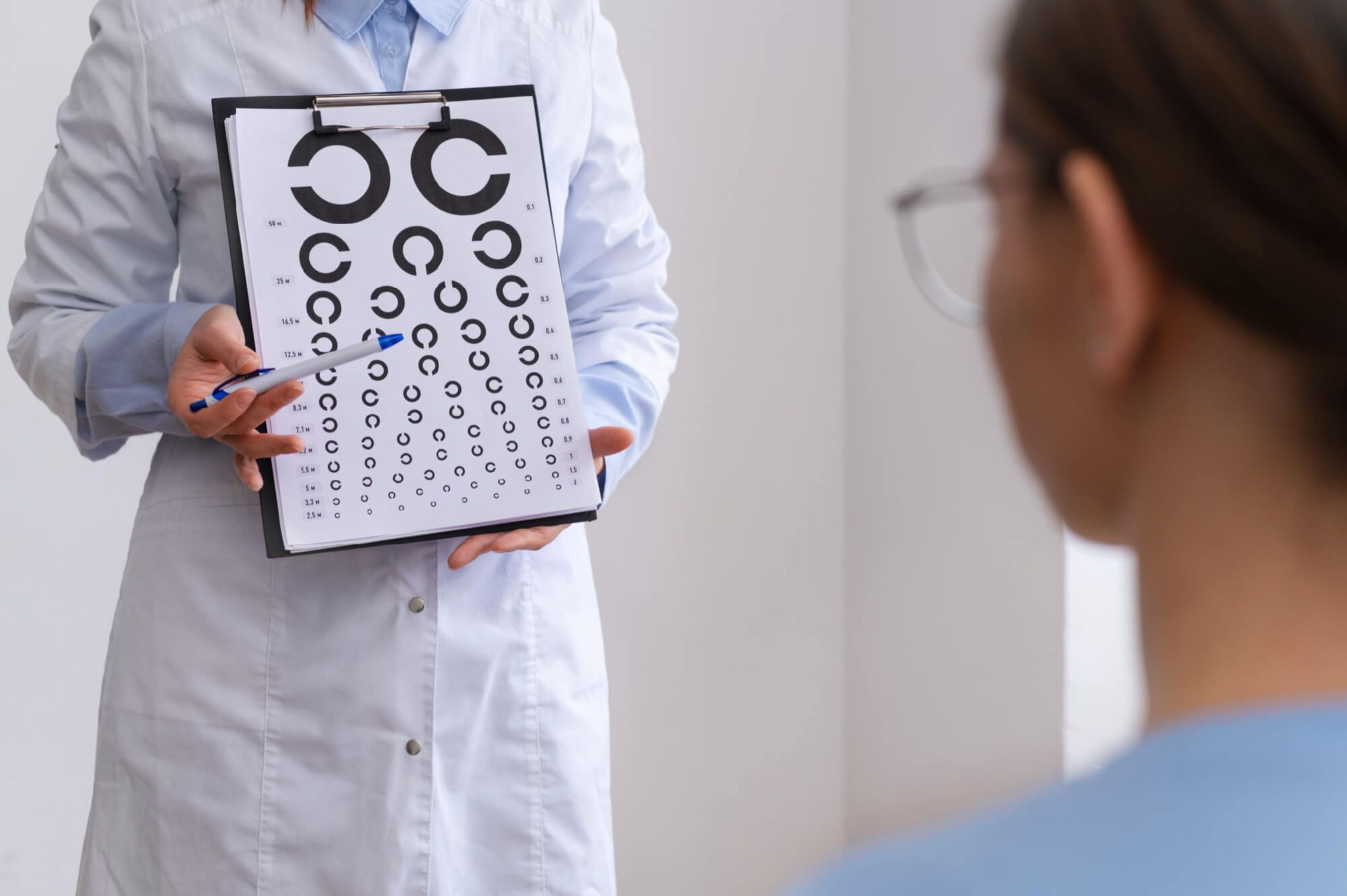
Visual Acuity Chart
A visual acuity chart is an instrument utilized to gauge the sharpness of your eyesight. These charts contain rows of letters, symbols, or numbers that get progressively smaller as you go down the chart. The patient is usually instructed to read aloud the smallest line they can see from a pre-specified distance.
The most famous form is the Snellen chart, invented by Dutch eye doctor Herman Snellen in the 1860s. The chart is currently the accepted standard for eye tests. The results are typically expressed as a fraction, e.g., 20/20, which is used to decide whether vision correction is required.
Charts should be employed in good lighting and at the appropriate distance to achieve reliable results. Vision charts are indispensable pieces of equipment in clinics, vision screening tests, and driving license tests. Vision charts provide a reliable and efficient way to identify vision changes. In addition, you can decide if you need contacts, glasses, or other treatments.
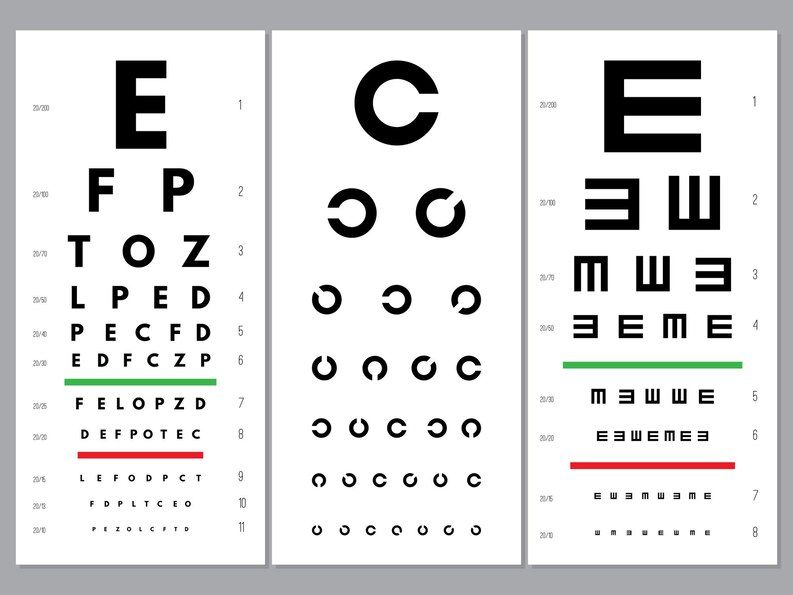
Types of Visual Acuity Charts
There are several types of visual acuity charts, each designed for a particular use based on the age of the patient, the literacy level, or unique testing requirements:
- Snellen Chart: The most widely utilized one, it contains uppercase letters in decreasing size.
- LogMAR Chart: A brief name for "Logarithm of the minimum angle of the resolution", this chart provides more accurate measurement than the Snellen Chart.
- Jaeger Chart: For testing near vision, this chart contains paragraphs of text with different font sizes. Patients are requested to read the smallest text they can at a distance.
- Tumbling E Chart: This chart is meant for children or those who are illiterate and have the letter "E" turned in various directions. The patient points in the direction of the arms of the "E."
- Lea Symbols and Allen Figures: These are pictorial charts that are meant for young children or developmentally delayed individuals.
Each chart is tailored to specific populations and ensures accurate, accessible vision testing for all.
Calculation of Visual Acuity based on Prescription
Although prescriptions and visual acuity cannot be directly swapped, you can approximate how well you see based on your glasses prescription. The prescription often has values of spherical, cylindrical, and axis, which corrects defocusing problems such as myopia, hyperopia, and astigmatism.
For example:
- An eye prescription of -1.00 diopters (D) might be the same as a 20/40 eyesight.
- The previous value of -2.00 D may be given as 20/100.
The individual with the vision of -2.00 D will use 20 feet in case this problem is not corrected. An average human being has a vision of 100 feet. Such estimates are contingent on the health of the eye, an individual's measure of contrast sensitivity, and the test conditions. Although approximate, this method enlightens the patients on the effects of their prescription on unaided vision. The best way to ensure the precision of the acuity is by ensuring that there is a standardized visual acuity test.
When you ask yourself, “What is my visual acuity based on prescription?”, it depends on the type and strength of corrective lenses. Approximately, here is how to go about it:
- -0.50 D to -0.75 D: You are mildly nearsighted; you are likely to see 20/30 to 20/40.
- -1.00D to -1.50D: Moderate; your eyesight can be 20/60 to 20/80.
- -2.00 D: 20/100 or worse without correction is likely.
- -3.00 D and more: The vision can be reduced to 20/ 200 or below with no glasses.
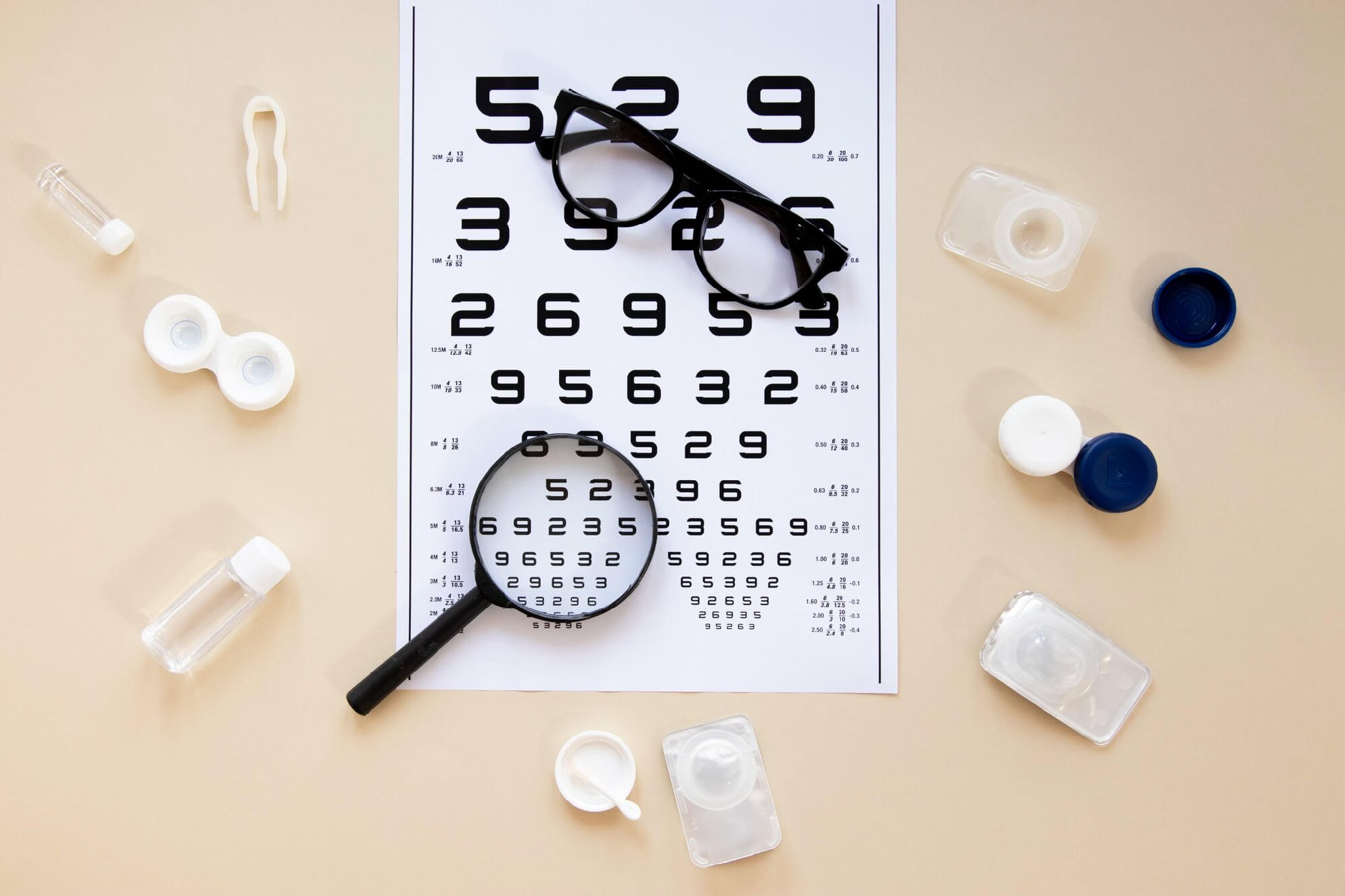
What Is a Visual Acuity Test?
Visual acuity tests measure how crisp and clear your eyesight is. It's a very popular test done during an eye exam. This test is used to detect issues with vision such as nearsightedness, farsightedness, and astigmatism.
You will read symbols or letters from a chart at a specific distance during the test. The optometrist will compare how well you can see each line, with and without your corrective lenses. Both eyes are tested separately and simultaneously.
Visual acuity screening is quick, painless, and easy. They are a starting point to determine whether glasses or contacts are necessary and to monitor the change in vision over time. Explore Eyeweb to get the best, correct vision glasses with fashionable frames from trusted brands.
Visual acuity screens are not complete eye exams. They do not assess eye pressure, peripheral vision, or retinal health. They are crucial for identifying problems with visual clarity. You must have regular visual acuity screening, especially if you have a headache, blurred vision, or eye fatigue.
Dynamic Visual Acuity Test
This test examines your ability to perceive and distinguish items while you or the object is moving. The dynamic visual acuity test is vital for athletes, pilots, and individuals whose career involves sharp visual tracking of movement.
Reading letters from a turning chart and spotting moving objects while the head moves are two common dynamic acuity tests. The idea is to see how movement impacts visual acuity and if your eyes and brain can keep up with moving stimuli.
The vestibular system, which governs balance, has a strong relationship with dynamic visual acuity. Dysfunction in this system can lead to blurred vision with movement, and oscillopsia.
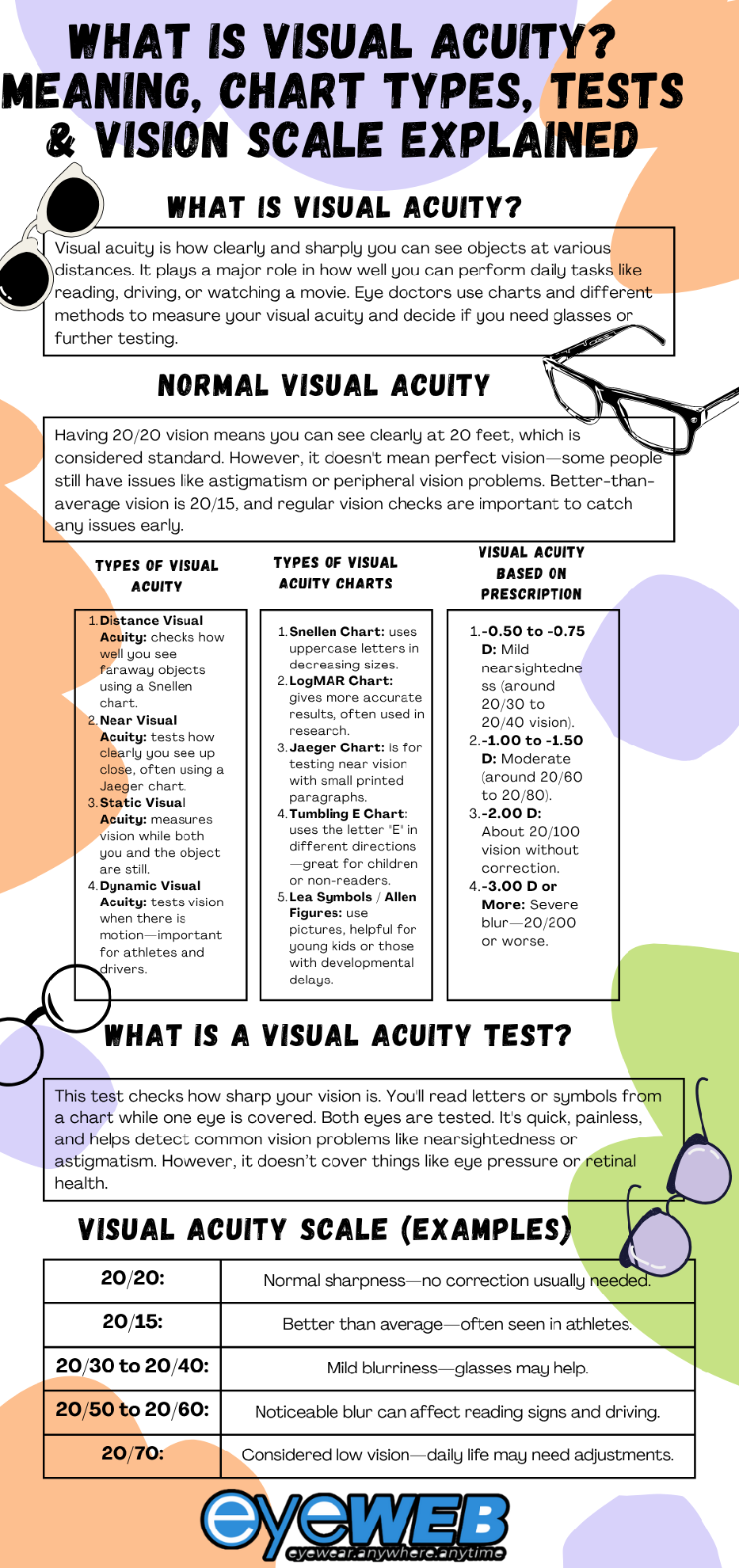
Online Visual Acuity Test
These tests let you test your eyesight from the comfort of your own home, using your digital devices. Online visual acuity test displays rows of increasingly smaller letters or symbols to replicate the operation of a Snellen or LogMAR chart.
For an online test:
- Make sure the screen is the correct distance away.
- Hide one eye, read the smallest visible line.
- Repeat with the other eye.
These devices can give a general meaning of your vision, but are not a professional eye examination option. Screen resolution, lighting, and inappropriate setups can all affect accuracy.
Various Visual Acuity Numbers
The following table lists the different levels of visual acuity along with numbers and descriptions.
Visual Acuity | Description |
Visual Acuity 6/6 | This is "normal" or normal visual acuity. No correction is generally required. |
Visual Acuity 20/15 | This is above-average vision. It's common with athletes or pilots. You can see how an average individual needs to be 15 feet away to read at 20 feet. |
Visual Acuity 20/20 | Normal standard. This is not a "perfect" vision, but it does indicate no visual defect. At 20 feet, you can see details that most individuals can read at that distance. |
Visual Acuity 20/25 | Below average. It may not be especially noticeable in everyday activities, but you might experience a slight blur in far vision. |
Visual Acuity 20/30 | At 20 feet, you can see what someone with normal vision might see at 30 feet. Use corrective lenses to your advantage, particularly for things like reading signs on the road. |
Visual Acuity 20/40 | Someone who has 20/40 vision is moderately impaired. Glasses or contacts can make things clearer. |
Visual Acuity 20/50 | At this vision level, blur can be noticeable. Reading and perceiving far-off things become difficult. The majority of states mandate correction for driving at this point. |
Visual Acuity 20/60 | A person having 20/60 means that he or she has to be at a position of 20 feet to see what an individual having normal vision can see at 60 feet. It is harder to read signs. |
Visual Acuity 20/70 | Generally, this can be regarded as low vision, particularly when it is not correctable. It is bound to require visual aids or alterations in day-to-day life and at work as well. |
Visual Acuity 20/200 | In the U.S., this is considered legally blind when it is not correctable. There is severe impairment of visual functioning with a general need for assistive technology to navigate and read. |
Visual Acuity 20/400 | Extreme blindness. Large objects appear indistinct without correction. People may depend extensively on magnifiers or other aids for vision in everyday life. |















